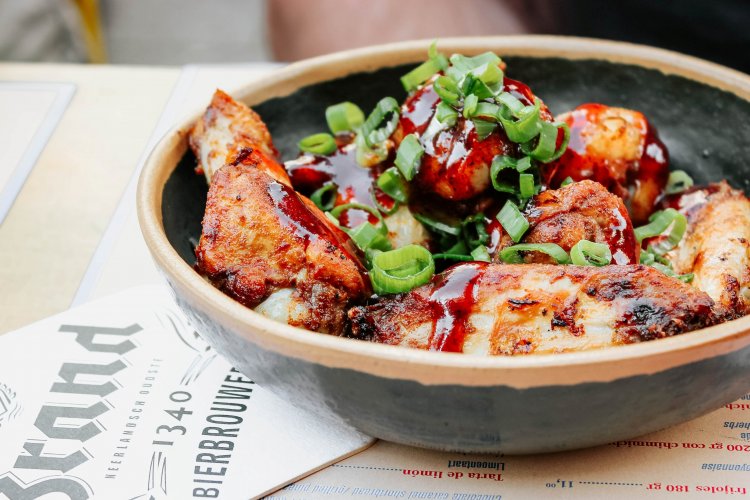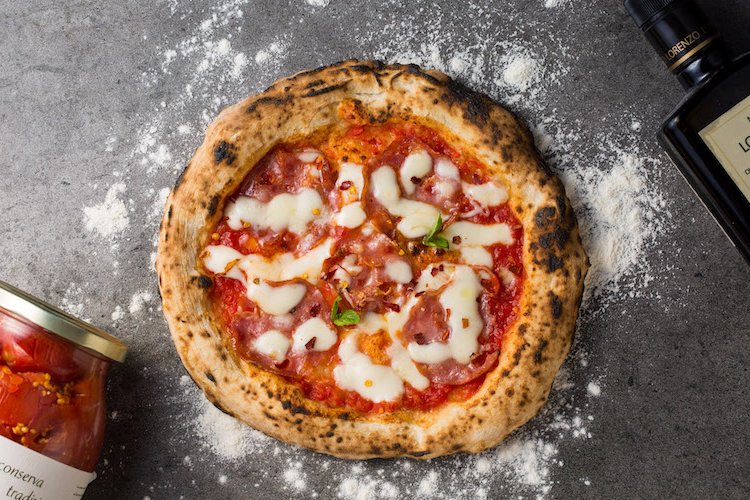Yeah I remember the massive queues for that place... stuff was good but the queue was kind of inexplicable to me.
Learning From a Master: The unbearable lightness of rice-wine yogurt
If you hear a Beijinger mention “nailao” (奶酪), they could be talking about Western-style cheese. But it’s just as likely that they’re referring to a beloved Beijing imperial dessert – gongting nailao (宫廷奶酪). Initially praised in Tang and Song dynasty poetry, made in Qing dynasty imperial kitchens, it later became a common folk snack. Until recently, Beijing nailao was dominated by four famous brands: Nailao Wei (奶酪魏), Sanyuan Meiyuan (三元梅园), Wenyu Nailao (文宇奶酪) and Wenzhu Nailao (文竹奶酪).
Nailao Wei was founded by Wei Hongchen (魏鸿臣) in 1888, who got the secret nailao recipe from the Qing imperial kitchen. His shop was originally located on Menkuang Hutong (门框胡同) in Qianmen, and the franchise’s five shops are now run by the family’s third and fourth generations. Sanyuan Meiyuan has more than 50 chain stores serving a wide selection of flavors. Meanwhile, the smaller kings of nailao got started this decade. Wenyu Nailao on Nanluogu Xiang has an eternally massive queue; Wenzhu Nailao was located in Di’anmen Xidajie and built up a loyal following among locals, especially the elderly and serious foodies.
Much to everyone’s surprise, Wenzhu Nailao closed last year due to rent increases, despite good business and growing reputation. One year later, 53-year-old owner Gao Zhenghua (高振华) is still searching for a new location to continue the nailao tradition. His shop was less famous than the others, but he insists that he is the only one who still makes nailao according to the traditional recipe. This master took time to discuss his art and the joys of making a traditional Beijing snack in these modern times.
What brought you to this business?
I first fell in love with the snow-white, delicate, and fragrant nailao when I was 24. I learned how to make it from the 78-year-old Mr. Zuo, who learned from imperial chefs. After 20 years of working outside of China, I earned enough money to return to Beijing. I tried the nailao around town, and all let me down. Since I wasn’t concerned about money anymore, I wanted to do something interesting. Why not bring back the traditional nailao, and help people experience it? So I seized the chance to start a nailao revival, with attitude.
What was the taste that you were trying to recreate?
When I was young, nailao shops were called laofang (酪坊). It was 2 mao then, and 4 kuai when I started my business in 2005. Now, it’s 10 kuai a bowl. Traditional nailao is made from simple ingredients: just milk, rice wine and sugar. Light and clear. It’s very fragile and a bit watery, which is proof there are no additives. The super-thick and fragrant version sold nowadays almost cannot be regarded as nailao. They use coagulating agents and powders to enhance the fragrance of milk – these additions may taste good, but it blinds people to the charms of traditional nailao. You can also tell non-traditional nailao by looking at the surface when you spoon it up; the broken part shouldn’t seem like yogurt or pudding. It should have subtle natural cracks.
Nailao is baked in an oven. I didn’t realize ovens were part of China’s cooking tradition.
They were baked in pine barrels, inside which are two levels of circular racks. Each level can hold 10 bowls of nailao. It was heated by putting hot – but not flaming – charcoal into a brazier, which was placed on the bottom of the barrel. It took about four hours to bake a barrel (20 bowls) of nailao.
What makes your product special?
Firstly, the milk – I had a great milk source, the Demao Dairy Farm (德茂奶牛场). Luckily, I was able to get fresh unprocessed milk from them (without pasteurization or removal of milk fats) daily, and I could start making nailao around 9pm. Secondly, the rice wine – I made it myself, which takes about three months. Rice wine can only be made well in a sterile environment, so strict that I had to wear three layers of gloves to clean utensils in a special room, where I also stored all the jars for brewing wine.
What do you do with leftover nailao?
There are never leftovers – I always sold out. My customers are usually regulars, most of whom are female or elderly. Two years ago, an old Taiwanese lady came into my shop to thank me. Originally a Beijinger, she moved to Taiwan in the ’40s. She returned to Beijing for a visit, and while dining out she suddenly thought of nailao. She asked where she could find it, and the waiters recommended my shop, Wenzhu. Her daughter ran over and brought back a bowl to the restaurant. The lady was impressed – she just couldn't believe it, because the flavor was the same as she had in childhood. It brought back good memories. She came to Wenzhu personally to meet me, and to thank me for preserving the tradition of nailao.
Nailao Wei 1) Rm 107, 202 Guang’anmennei Dajie, Xuanwu District; 2)148 Xisi Beidajie, Xicheng District; 3) Inside Jiumen Xiaochi, 1 Xiaoyou Hutong, Houhai, Xicheng District. 奶酪魏,1) 宣武区广安门内大街202号107室; 2) 西城区西四北大街148号; 3) 西城区后海孝友胡同1号九门小吃内
Sanyuan Meiyuan 1) 7 Chongwenmen Xidajie, Chongwen District; 2) Xinjiekou Nandajie (near Ping’anli subway station) 三元梅园,1) 崇文区崇文门西大街7号; 2) 西城区新街口南大街平安里地铁站旁
Wenyu Nailao 49 Nanluogu Xiang, Dongcheng District. (6405 7621) 文宇奶酪店, 东城区南锣鼓巷49号






